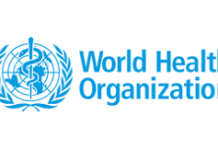To address the growing threat of antimicrobial resistance (AMR), the World Health Organization (WHO) has released an updated Bacterial Priority Pathogens List (BPPL) for 2024, highlighting 15 families of antibiotic-resistant bacteria.
AMR occurs when bacteria, viruses, fungi, and parasites evolve to withstand the medications designed to eliminate them, leading to more severe illnesses and an increased risk of disease transmission, sickness, and fatalities. The misuse and overuse of antimicrobials are significant factors driving AMR.
The revised list integrates the latest research and expert insights to steer research and development (R&D) efforts for new antibiotics and to promote global cooperation in fostering innovation, according to the UN health agency.
Among the critical priority pathogens are gram-negative bacteria resistant to last-resort antibiotics and Mycobacterium tuberculosis, which causes tuberculosis and is resistant to rifampicin. These pathogens pose severe global threats due to their high disease burden, treatment resistance, and ability to spread resistance genes to other bacteria.
WHO highlights that gram-negative bacteria have intrinsic mechanisms to evade treatments and can transfer genetic material that confers drug resistance to other bacterial strains. High-priority pathogens, such as Salmonella (responsible for diarrhea, fever, and stomach pain) and Shigella (which causes intestinal infections), are particularly burdensome in low- and middle-income countries.
Other high-priority bacteria include Pseudomonas aeruginosa (which can cause pneumonia) and Staphylococcus aureus (responsible for skin infections), which pose significant healthcare challenges.
Additionally, pathogens like antibiotic-resistant Neisseria gonorrhoeae (causing gonorrhea) and Enterococcus faecium (which can lead to bloodstream infections) present distinct public health challenges. These bacteria cause persistent infections and exhibit resistance to multiple antibiotics, requiring focused research and targeted public health measures.
Medium-priority pathogens include Group A and B streptococci (causing throat and intestinal infections), Streptococcus pneumoniae (leading to pneumonia), and Haemophilus influenzae (which can cause meningitis).
As reported by Hindustan Times, these bacteria represent a significant disease burden and demand increased attention, especially in vulnerable groups such as children and the elderly, particularly in resource-limited settings.
























